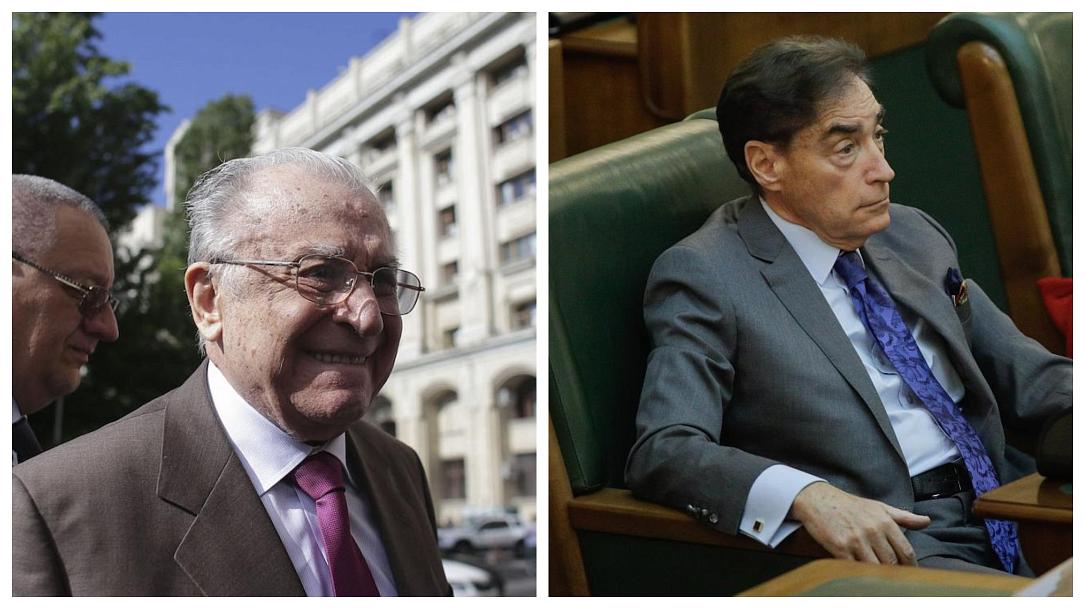Former Romanian president, PM to be prosecuted in 1990 miners' riot case



Former president Ion Iliescu and ex-prime minister Petre Roman will stand trial over their involvement in the 1990 miners' riot (Mineriada) case, the General Prosecutor's Office announced on Wednesday, April 2.
The case concerns the violent repression of the protests against Ion Iliescu's regime in mid-June 1990, only six months after the 1989 Romanian Revolution.
The two face charges of crimes against humanity alongside Gelu-Voican Voiculescu, at the time the deputy PM of the Provisional Government of Romania, Virgil Măgureanu, the director of the Romanian Intelligence Service, and Adrian Sârbu, at the time an advisor to the PM.
Miron Cozma, the miners' union leader, Vasile Dobrinoiu, at the time the commander of the Higher Military School of Officers of the Ministry of the Interior, and Peter Petre, at the time the commander of Military Unit 0575 Măgurele, will also be prosecuted, the authorities said.
The prosecutors say that in June 1990 the decision-makers at the highest level in the Romania "launched a policy of repression against the civilian population in the capital." This resulted in the death of four people, two cases of rape, and the physical/ mental harm of more than 1,300 people, while over 1,200 people were illegally deprived of liberty.
Beginning on April 22, 1990, a protest took place in Bucharest's University Square, lasting several weeks, until June 13. The protestors were opposing the newly-established power and demanded a break with the communist regime that had just been replaced in December 1989.
"In this context, Iliescu Ion, Roman Petre, Voiculescu Gelu-Voican, Măgureanu Virgil, and other individuals from the leadership or the National Salvation Front launched an attack against the demonstrators present in University Square, which in fact represented a pretext intended to mask the repressive action against the people who had previously participated in these demonstrations, especially opinion leaders, as well as against any person who manifested some form of opposition or who fell into categories that, in their opinion, could manifest a potential opposition, especially students, intellectuals or people who expressed closeness to Western values," the prosecutors said.
They also pointed to the "manipulative, insidious public communication regarding the danger that the demonstrators represented for the democratic values," which played an important role in creating the framework for the attack.
As part of the repression, the headquarters of the Institute of Architecture and of the University of Bucharest were forcibly entered, several offices were searched, and the people inside were evacuated through acts of violence. Following a decision of the country's leadership, workers from the Bucharest Heavy Machinery Enterprise were brought to University Square. They assaulted the people in the area of the Institute of Architecture, after which they occupied University Square together with the police, in order to prevent the return of the demonstrators, the prosecutors explain. The protesters responded violently, and the headquarters of the Bucharest Police, the Ministry of the Interior, Romanian Television, and the Romanian Intelligence Service were set on fire.
The repression continued on June 14 and 15 "through a systematic attack carried out together with the miners and workers from several counties, who had become enforcers of order, parallel to those recognized and organized according to the law."
In June 2017, Ion Iliescu and the other defendants were prosecuted for crimes against humanity in this case, but in December 2020, the High Court of Cassation and Justice decided to return the case to the Military Prosecutor's Office for reinvestigation.
(Photo: Inquam Photos/Octav Ganea, George Calin)
simona@romania-insider.com